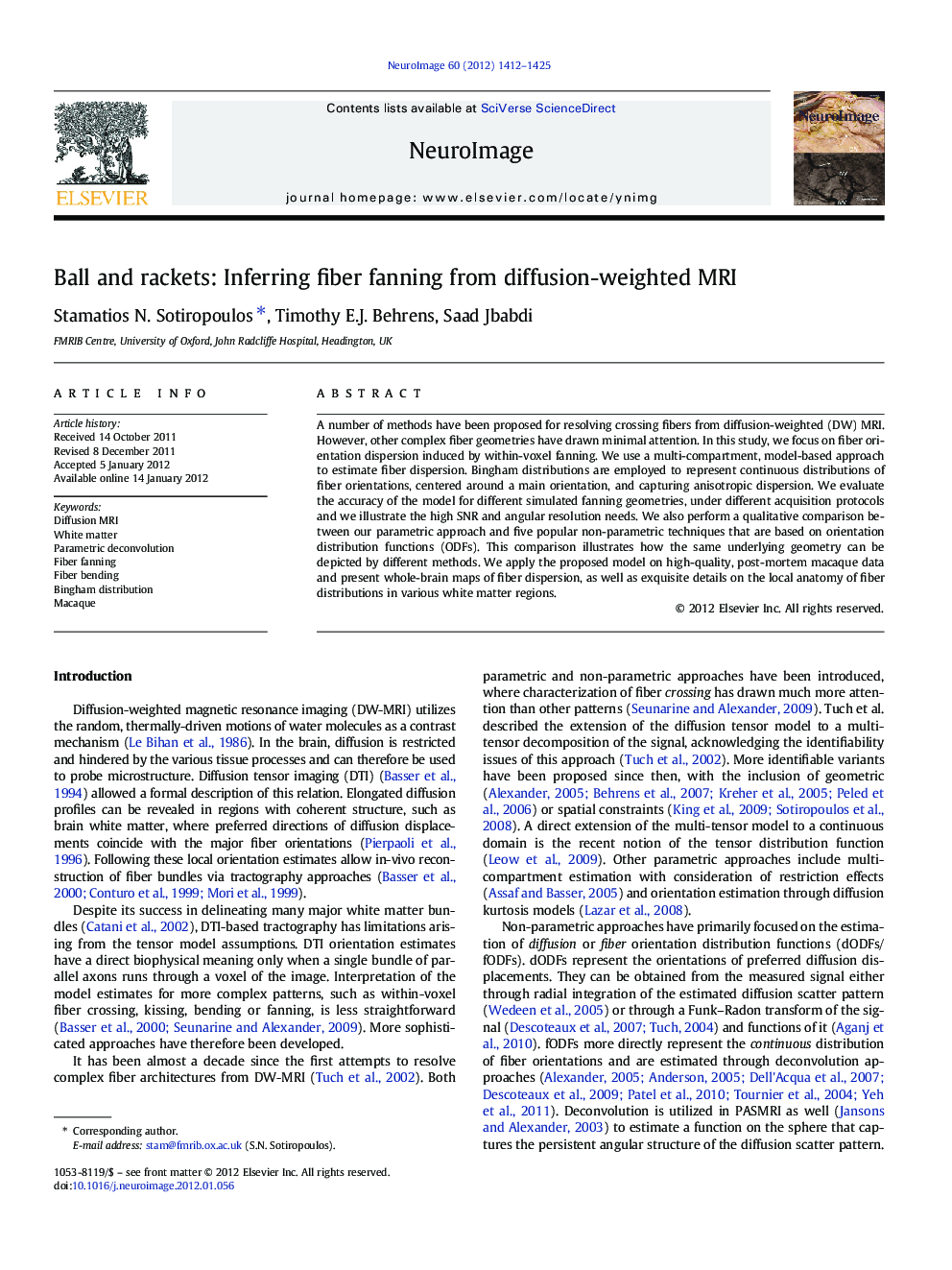| Article ID | Journal | Published Year | Pages | File Type |
|---|---|---|---|---|
| 6032161 | NeuroImage | 2012 | 14 Pages |
A number of methods have been proposed for resolving crossing fibers from diffusion-weighted (DW) MRI. However, other complex fiber geometries have drawn minimal attention. In this study, we focus on fiber orientation dispersion induced by within-voxel fanning. We use a multi-compartment, model-based approach to estimate fiber dispersion. Bingham distributions are employed to represent continuous distributions of fiber orientations, centered around a main orientation, and capturing anisotropic dispersion. We evaluate the accuracy of the model for different simulated fanning geometries, under different acquisition protocols and we illustrate the high SNR and angular resolution needs. We also perform a qualitative comparison between our parametric approach and five popular non-parametric techniques that are based on orientation distribution functions (ODFs). This comparison illustrates how the same underlying geometry can be depicted by different methods. We apply the proposed model on high-quality, post-mortem macaque data and present whole-brain maps of fiber dispersion, as well as exquisite details on the local anatomy of fiber distributions in various white matter regions.
⺠An approach to estimate fibre orientation dispersion from DW-MRI data is proposed. ⺠The model accounts for within-voxel fibre fanning and bending. ⺠Using extensive simulations, we show the model robustness against data quality. ⺠We also compare our approach to several other non-parametric strategies. ⺠We illustrate fine details uncovered by this model on a post-mortem macaque dataset.
